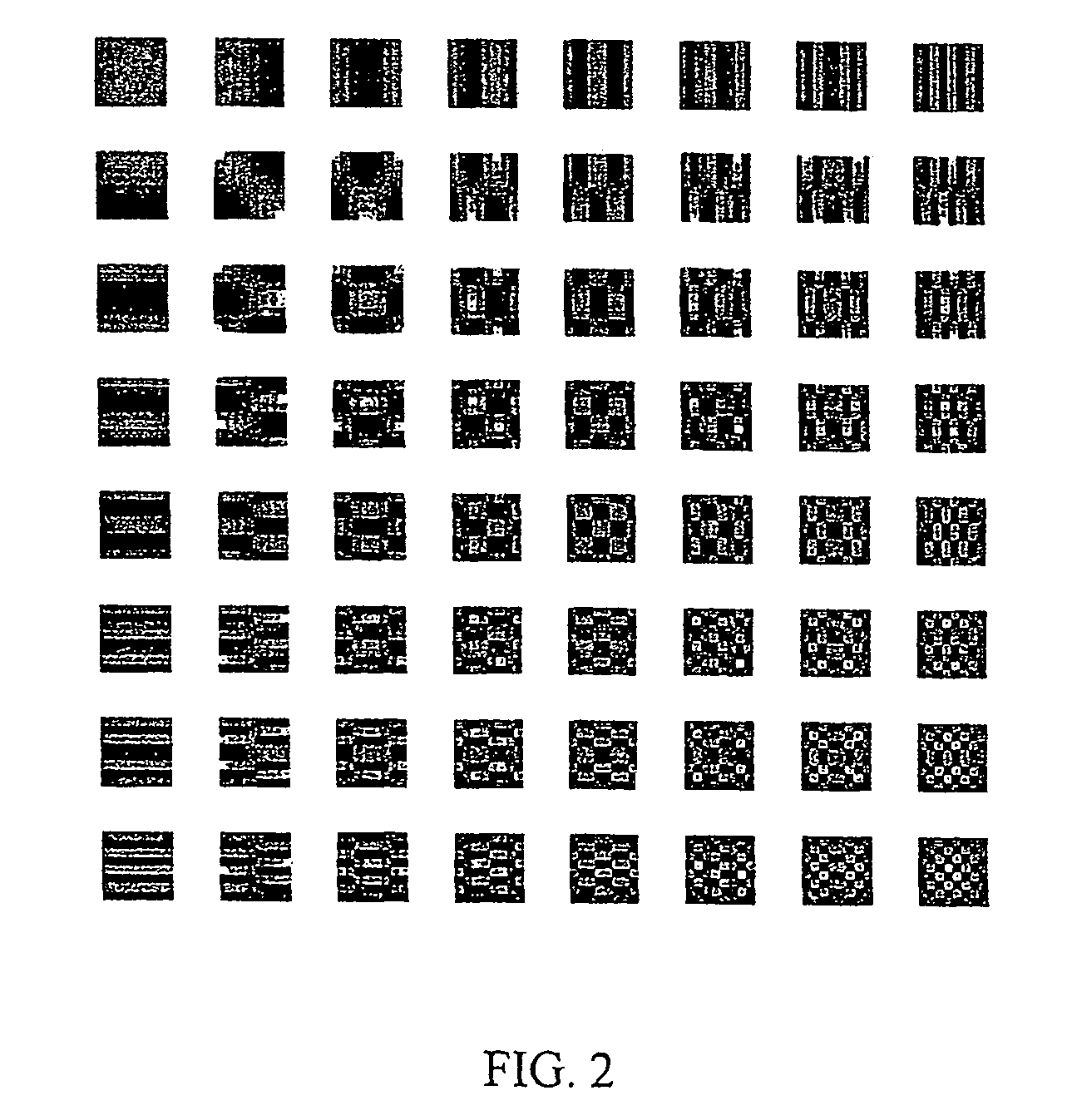Method and architecture for temporal-spatial deblocking and deflickering with expanded frequency filtering in compressed domain
a technology of expanded frequency filtering and compressed domain, applied in the field of methods and architecture for temporal-spatial deblocking and deflickering with expanded frequency filtering in compressed domain, can solve the problems of block-based transform compression techniques inherently introduced, reconstruction errors in blocks having non-zero motion vectors associated, and more noticeable blocky effects
- Summary
- Abstract
- Description
- Claims
- Application Information
AI Technical Summary
Benefits of technology
Problems solved by technology
Method used
Image
Examples
Embodiment Construction
[0024]To enable a fuller appreciation of the advantages of the present invention, a more specific description of the prior art will now be given. As used in this specification and expressly as used in the claims, the terms “deblocking” and “deblocking filtering” will be used to refer to one and / or both of “deblocking” and “deflickering, i.e., spatial block-based artifacts and / or temporal block-based artifacts and their filtering, for purposes of brevity, although it is recognized in accordance with the present invention that these types of artifacts may arise from different causes and may be addressed in different ways.
[0025]The presence of blocking artifacts in block-based video and image compression systems usually arises from one of two sources: either from a data quantization level that is higher than the video signal redundancy threshold of the human visual model, or from independent prediction and quantization for each block of the image. In conventional DCT block based video ...
PUM
 Login to View More
Login to View More Abstract
Description
Claims
Application Information
 Login to View More
Login to View More - R&D
- Intellectual Property
- Life Sciences
- Materials
- Tech Scout
- Unparalleled Data Quality
- Higher Quality Content
- 60% Fewer Hallucinations
Browse by: Latest US Patents, China's latest patents, Technical Efficacy Thesaurus, Application Domain, Technology Topic, Popular Technical Reports.
© 2025 PatSnap. All rights reserved.Legal|Privacy policy|Modern Slavery Act Transparency Statement|Sitemap|About US| Contact US: help@patsnap.com



